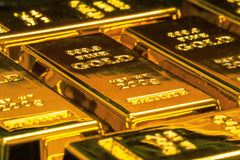What Influences the Price of Gold and Silver?
For investors in Australia, understanding the factors that drive the price of gold and silver is crucial. These precious metals are not only valuable assets for portfolio diversification but also act as safe havens in times of economic uncertainty. While gold and silver prices fluctuate daily, various factors influence their long-term trends.
We’ll be exploring the key drivers behind the price of gold and silver, focusing on issues like supply and demand, inflation, political instability, and the relationship between gold and silver prices.
Supply and demand
The most fundamental factor affecting the price of any commodity such as gold and silver is supply and demand. When demand for gold and silver outpaces supply, prices rise, and when supply exceeds demand, prices fall.
Gold is heavily influenced by both jewellery demand and investment demand. Silver, on the other hand, is not only used for investment purposes but also in various industrial applications such as electronics and solar panels. As a result, changes in industrial demand, particularly in rapidly growing sectors, can significantly influence silver prices.
The limited availability of these metals also plays a role in shaping their prices. Mining operations are expensive and slow to respond to changes in market demand. For gold, new deposits are becoming increasingly difficult to find, making the supply side relatively inelastic. On the other hand, silver production can sometimes increase more rapidly, but the broader industrial demand often keeps silver prices aligned with global economic trends.
Inflation
Gold has long been regarded as a hedge against inflation. During periods of high inflation, the purchasing power of currencies declines, making assets like gold more attractive. When inflation rises, gold prices tend to increase as investors seek a more stable store of value. This is largely because gold retains its intrinsic value, even as the value of paper currencies fluctuates.
The relationship between gold and inflation is also tied to investor sentiment. When inflation rates rise, the returns on bonds and other fixed-income assets become less appealing. Silver, to a lesser extent, shares this role as a hedge against inflation, though it is more sensitive to industrial demand.
Political and economic uncertainty
Political instability and economic uncertainty are major drivers of the gold price today's age. Gold is often referred to as a "safe haven" asset, meaning its value tends to rise during times of global instability. Investors flock to items like gold cast bars when there is a loss of confidence in government policies, geopolitical tensions, or the stability of financial markets.
For example, when financial crises occur or when there is uncertainty surrounding major economic policies, gold typically benefits from increased demand. People seek refuge in assets that are less likely to be impacted by government intervention or economic turmoil.
Silver also benefits from periods of uncertainty, though to a lesser extent. While items like silver cast bars are often used as a safe haven, its price is more volatile due to its industrial applications. However, in times of severe political or economic distress, both gold and silver prices often rise in tandem.
Interest rates and monetary policies
Interest rates and monetary policies help to determine gold and silver prices. When interest rates rise, the opportunity cost of holding gold, which does not generate any yield, increases. This makes it less attractive for investors and drives the price down. When banks lower interest rates or engage in quantitative easing, gold becomes more appealing.
Silver prices are similarly influenced by interest rates, though its role in industrial production can cause deviations. For example, low interest rates can stimulate economic growth, boosting industrial demand for silver.
Value of the U.S. Dollar
Since gold and silver are globally traded commodities, their prices are often quoted in U.S. dollars. Therefore, fluctuations in the value of the U.S. dollar significantly affect prices. When the dollar weakens, gold and silver prices tend to rise because they become cheaper for buyers using other currencies. Conversely, a strong dollar can push prices down.
Why are gold and silver prices correlated?
Gold and silver prices are closely correlated due to their historical roles as monetary metals. In addition, many market participants invest in both metals as part of a broader strategy to hedge against inflation and currency depreciation.
Who determines gold and silver prices?
The prices of gold and silver are usually determined by the global financial markets. These prices fluctuate based on supply and demand dynamics, geopolitical events, and economic indicators. In particular, the gold price today is influenced by trading on major exchanges like the London Bullion Market and COMEX in the United States.
Conclusion
In summary, many factors influence the price of gold and silver, including supply and demand, inflation, political instability, interest rates, and the value of the U.S. dollar. While gold and silver prices tend to be correlated, they’re also driven by their unique market dynamics.


